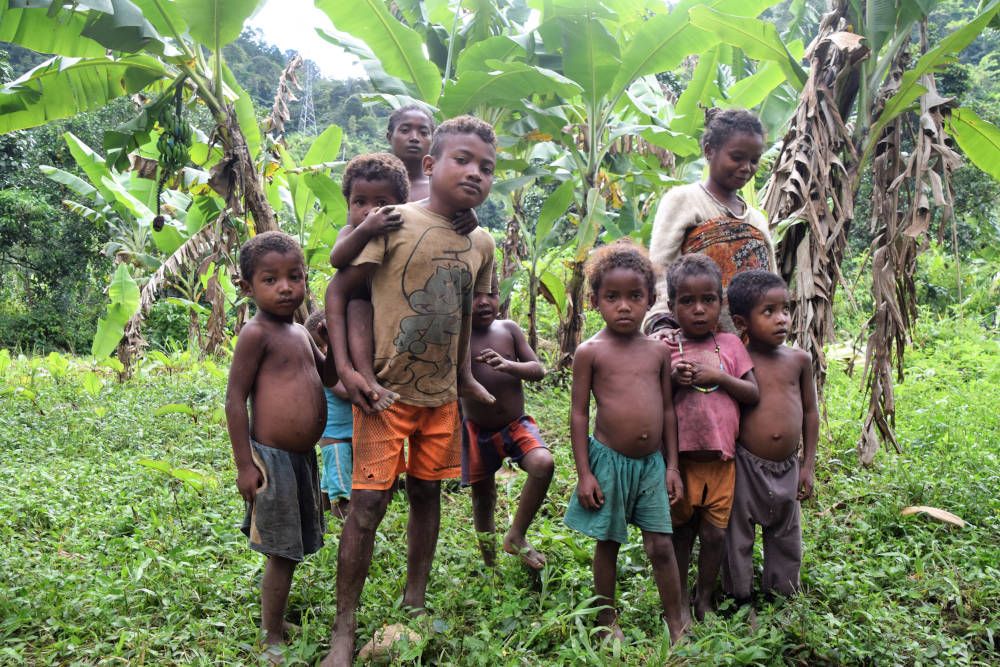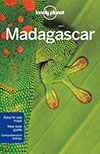Ranomafana National Park, the tropical rainforest
Ranomafana National Park, the tropical rainforest
For many tourists who visit Madagascar, the Ranomafana National Park is the first introduction to the beautiful nature of the country. From Antananarivo on the way south via the RN 7, this is the first park on the route. For us, this was the first time we could see lemurs. We were expectantly looking forward to two days of walking in the park. Fortunately, we were not disappointed!
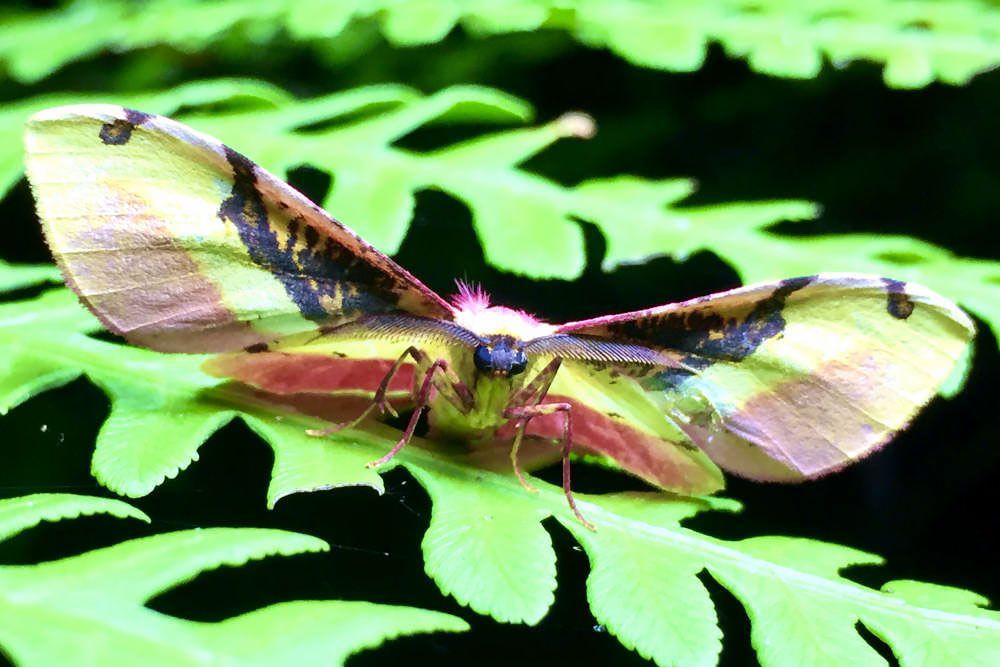
National Park Ranomafana
The park was established in 1991 to protect two rare species of lemurs. In total, the park covers more than 400 km². Ranomafana is part of the eastern rainforest of Madagascar. It consists of a primary forest with huge trees and plants and a secondary forest. Here the trees are less large but are closer together. The name Ranomafana means “hot water” in Malagasy. Due to the presence of thermal springs in the area, it was given that name at one time or another.
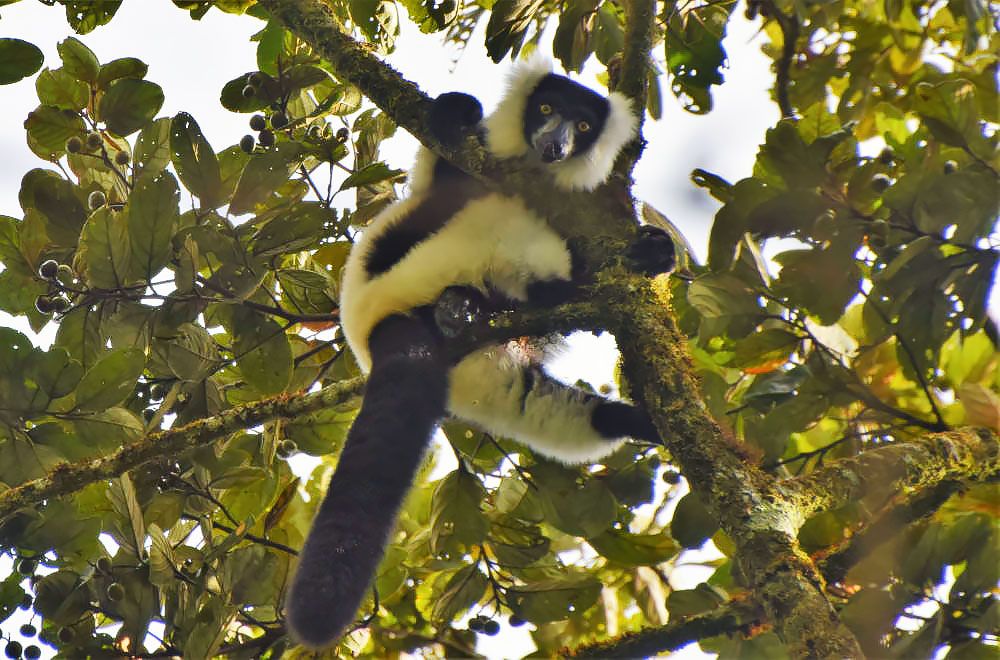
Nature in National Park Ranomafana
The park is home to a wide variety of animals. Most visitors come to admire the twelve species of lemurs that are found here. Two rare species live in this park: the golden bamboo lemur and the giant bamboo lemur. These are the only places in Madagascar where you can find these species.
Birdwatchers can enjoy themselves in the park. There are more than 100 species. Most of them are indigenous. Now it is generally small species that live here. It is not easy to spot them all.
Reptiles like to live in the tropical rainforest. So, you can find a great diversity of chameleons in the park. No less than two-thirds of all chameleon species in the world have their habitat in Ranomafana. It is an art to find them because of their size and camouflaged colours. But the guides are a master to locate them.
In addition to the animal kingdom, the park has special plant species to offer. There are several carnivorous plants. You can see a lot of bamboo, the food for the bamboo lemurs, palm trees, mosses and tree ferns. The raffia palm is very common in this area. The raffia is important for the inhabitants to make various products. It is special that in the village of Ranomafana you see many souvenirs of raffia in the form of elephants and giraffes. These are animals that do not live in Madagascar.
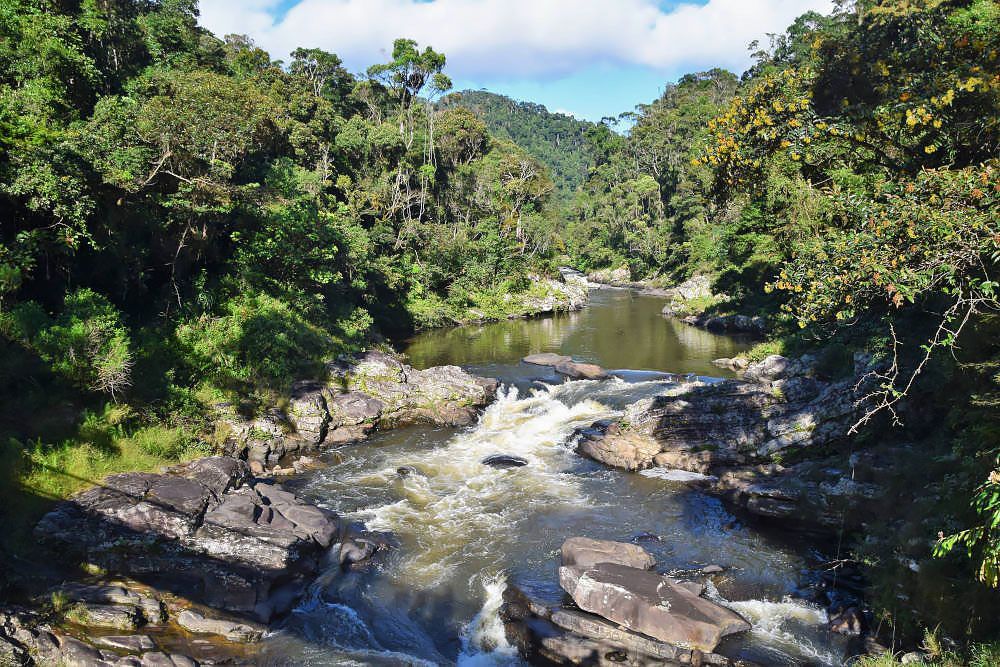
Walks in Ranomafana National Park
There are several walking possibilities in the park. The paths are well laid out and passable for everyone. It is important to discuss in advance with the guide what you want to see and how long the tour may last. Keep in mind that with a six-hour trip you certainly don’t walk the entire time. You are often craning your neck to stare up and admire the lemurs walking above you in the trees or jumping from branch to branch. These are ideal moments of rest for the legs, but not for the neck muscles. After two days of walking around in the park we had a stiff neck from looking up all the time. But we could say that we had seen eight different kinds of lemurs during our walks, so you soon forget about that stiff neck.
When the “spotter” who is sent on ahead discovers a family of lemurs, he lets the guide know. For the best view, you have to go into the forest. This can sometimes be a bit slippery and steep. Good walking shoes are essential. The guide and spotter are very helpful to lean on or give you a hand. In this way everyone gets to the place where the lemurs are nicely visible. You are often in the holes and the lemurs stare at you with their piercing eyes penetrating. A great thing to experience.
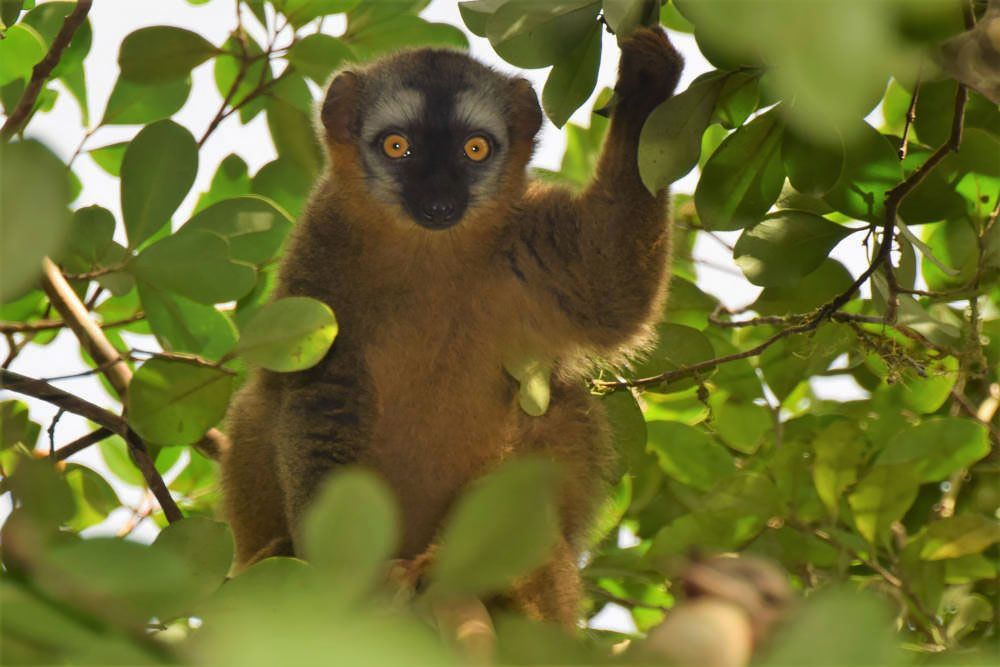
Bamboo lemurs
It was beautiful during our walk that bamboo lemurs came to the ground to take bamboo shoots that were lying there. Just a few metres in front of us, they started to work with the bamboo and then eat it. We were close by with our cameras, but they had food and didn’t care.
The second day we went on a big trip, starting in the secondary forest and continuing on to the primary forest. In that last part we hardly saw any lemurs anymore, but the nature was beautiful. This part is less visited by tourists, so it was very quiet. Eventually we descended towards the village of Ranomafana. A beautiful, varied trip that we concluded in the thermal bath in the village. The warmth was good for our muscles and we were the main attraction for the locals: there were no other “vazaha” (foreigners) in the bath.
It is possible to take an evening walk at the end of the day to spot chameleons. We didn’t do this in the end. The walk is directly along the road, where some traffic rushes over in the dark and you walk with many others to watch chameleons by the roadside. This didn’t appeal to us so much. Although the pictures we saw from others were beautiful, we found this a bit too crowded and touristy.
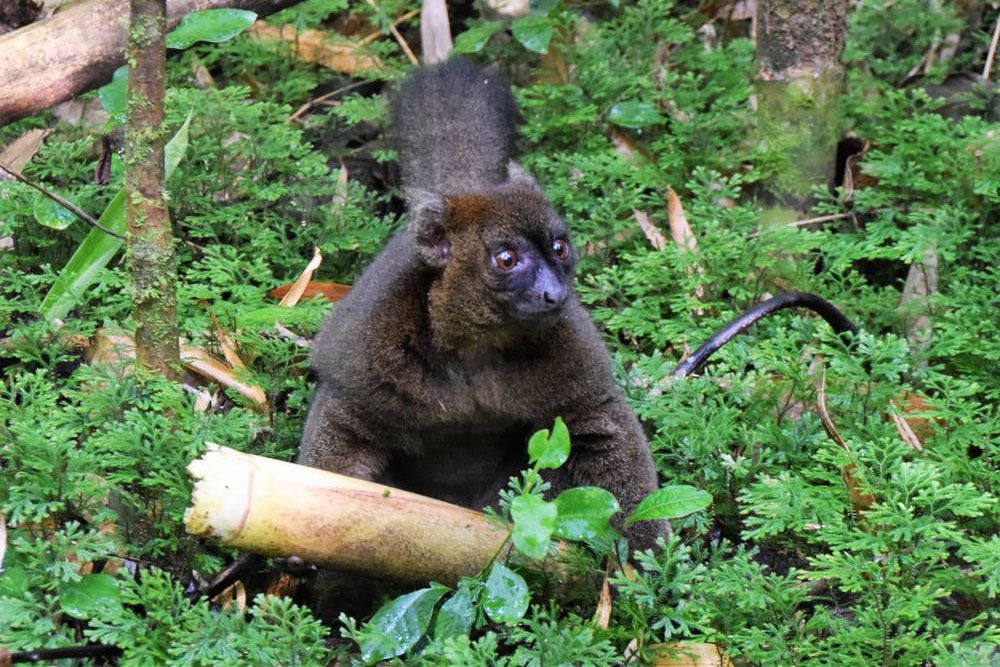
Practical matters
Read all the practical tips below to make the most of your visit to Ranomafana National Park.
How to get there
The Ranomafana National Park is located on the RN 25 in the direction of Manakara. Most tourists do it on their route south on the RN 7. Then take the exit to the left 26 kilometres before Fianarantsoa. This exit is in a sharp bend and may not be very noticeable. On navigation apps, you will find earlier turns to Ranomafana, but these are very difficult to drive and only accessible for a 4×4.
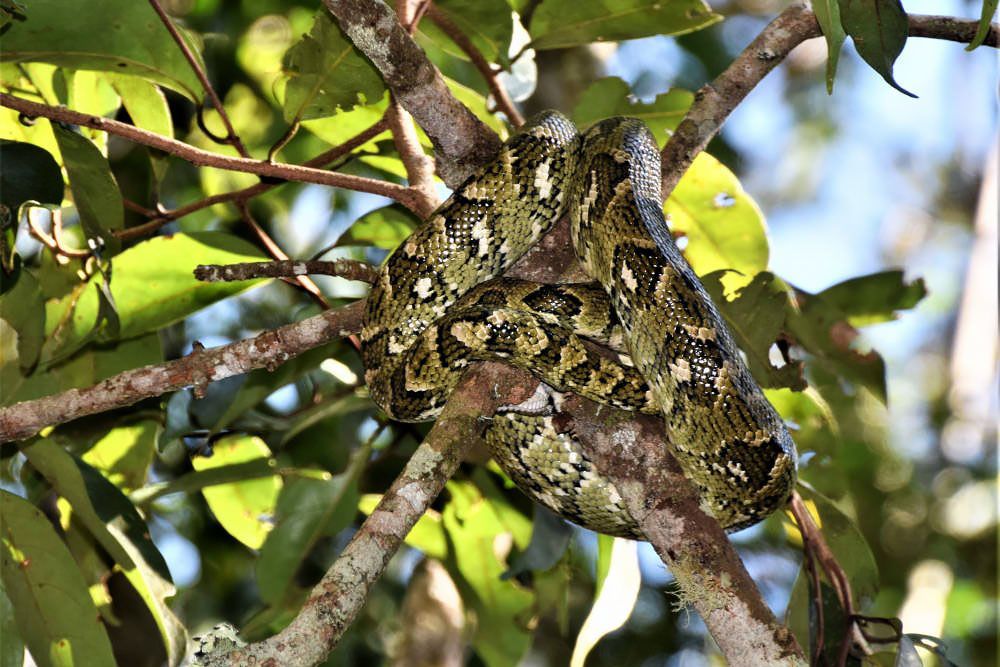
Access prices and guides
Access to the park is 55,000 ariary per person. For a guide, there is an additional amount that depends on the duration of the walk. Three hours with a guide costs 75,000 ariary, seven hours with a guide cost 150,000 ariary. The evening walk costs 50,000 ariary. In addition, everyone must pay a “community tax” of 5,000 ariary.
The quality of the guide determines very much how interesting the walk will be. Our guide Modeste was excellent and spoke super English. Other guides with good reviews from Dutch visitors are Patrick and Theo. The latter guided Geraldine Kemper, aged 3, on a tour of the park.
It is recommended to start the walk at 7 o’clock when the park opens. The lemurs are most active in the early morning.
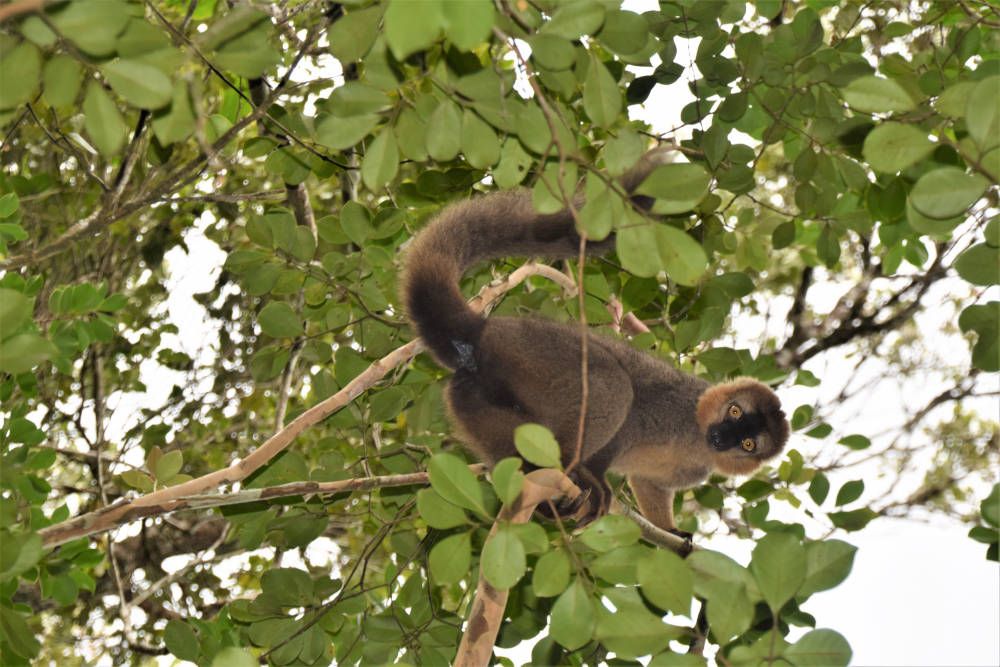
Hotels in Ranomafana National Park
- Foret Australe. Budget accommodation with small, simple bungalows. Bookable via Booking.com. Check the mattress and hot water before accepting the room.
- Karibotel. This is a relatively new hotel with beautiful views. Beautiful bungalows with lots of comfort. There are many stairs on the complex that are not all lit in the evening.
- Hotel Thermal. Luxury hotel with 21 comfortable, spacious rooms. Good restaurant. This hotel is a bit further away from the national park, but closer to the town of Ranomafana.
